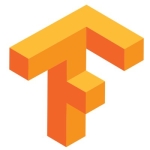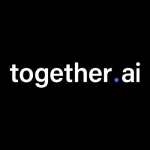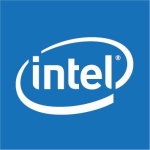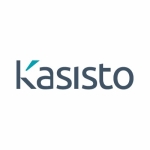
Data Engineer at a educational organization with 201-500 employees
Enables task automation and predictive analysis while needing increased model variety and token limits
Pros and Cons
- "Azure OpenAI is used as chat services, allowing me to replace human tasks with analytical capabilities."
- "Azure could significantly benefit from including more LLM models apart from OpenAI, as I often need to switch clouds when a model doesn't meet my requirements."
What is our primary use case?
I utilize Azure OpenAI primarily for creating embeddings, model embeddings, query services, and scenarios where user queries require significant cognitive processing. I also use it for chat services, data analytics, and predictive analysis within my ML and AI firm.
What is most valuable?
Azure OpenAI is used as chat services, allowing me to replace human tasks with analytical capabilities. OpenAI models help me create predictive analysis products and chat applications, enabling me to automate tasks and reduce the workforce needed for repetitive work, thereby streamlining operations.
What needs improvement?
Azure could significantly benefit from including more LLM models apart from OpenAI, as I often need to switch clouds when a model doesn't meet my requirements. Expanding token limitations for scaling while ensuring concurrent user access is crucial.
For how long have I used the solution?
I have been using Azure OpenAI for about a year and a half, since the emergence of OpenAI's inclusion in Azure.
Buyer's Guide
Azure OpenAI
April 2025
Learn what your peers think about Azure OpenAI. Get advice and tips from experienced pros sharing their opinions. Updated: April 2025.
849,190 professionals have used our research since 2012.
What do I think about the stability of the solution?
I have not experienced any performance or stability issues with Azure OpenAI.
What do I think about the scalability of the solution?
Scaling involves considerations such as token limits and requires intermediary services for load balancing, but the model setup itself is uncomplicated.
How are customer service and support?
The customer service follows a hierarchical system. If the initial support personnel cannot resolve a query, it escalates to someone with more expertise. Tickets can be prioritized for critical issues, and the service has been helpful overall.
How would you rate customer service and support?
Positive
How was the initial setup?
The initial setup process for Azure OpenAI is straightforward. Once an application is ready, I simply input model credentials to begin using the services, which typically takes five to ten minutes.
What's my experience with pricing, setup cost, and licensing?
In the past, the primary expense involved token limitations which constrained scaling. Recent iterations have increased token allowances, mitigating some challenges associated with concurrent user access at scale.
What other advice do I have?
On a scale of one to ten, I would rate Azure OpenAI as seven to seven and a half. The inclusion of a larger variety of models and the improvement of scaling capabilities are essential areas of focus. My overall product rating is 7.
Which deployment model are you using for this solution?
Public Cloud
If public cloud, private cloud, or hybrid cloud, which cloud provider do you use?
Microsoft Azure
Disclosure: I am a real user, and this review is based on my own experience and opinions.
Last updated: Mar 31, 2025
Flag as inappropriateAssociate consultant at a tech services company with 1,001-5,000 employees
Improves text generation while needing better language support
Pros and Cons
- "The AI search functionality is particularly effective, as it creates summaries from data."
- "Azure's integration with OpenAI's GPT is beneficial as well, especially for text generation tasks."
- "Azure needs to work on its own model development and improve the integration of voice-to-text services, particularly for right-to-left languages such as Arabic and Urdu."
- "Azure needs to work on its own model development and improve the integration of voice-to-text services, particularly for right-to-left languages such as Arabic and Urdu. The accuracy in these languages requires improvement."
What is our primary use case?
We are using Azure OpenAI in programming, particularly for generating text and image content. For coding purposes, we use Copilot for writing code in Python. The use depends on client requirements, especially when working with text or image processing.
What is most valuable?
Some valuable features we utilize include the search functionality and Copilot for coding. The AI search functionality is particularly effective, as it creates summaries from data. Azure's integration with OpenAI's GPT is beneficial as well, especially for text generation tasks.
What needs improvement?
Azure needs to work on its own model development and improve the integration of voice-to-text services, particularly for right-to-left languages such as Arabic and Urdu. The accuracy in these languages requires improvement.
For how long have I used the solution?
I have been working with Azure OpenAI for about one and a half to two years.
What do I think about the stability of the solution?
The solution works fine, particularly for enterprises or even some small enterprises. However, Microsoft needs to implement its solutions more in its own products to demonstrate their effectiveness.
What do I think about the scalability of the solution?
For scalability, I would rate Azure OpenAI around six or seven on a scale of one to ten. The scalability depends on whether the application is multimodal or uses a single model.
How are customer service and support?
Microsoft offers phone or chat support, however, they need to implement AI chatbots for technical support. It is important for organizations like Microsoft to apply OpenAI solutions within their own structures.
How would you rate customer service and support?
Neutral
Which solution did I use previously and why did I switch?
I moved to another vendor for firewall solutions, specifically mentioning ZenoWatt initially, yet clarified that I am currently working more with cloud solutions.
How was the initial setup?
The setup can be straightforward if you are familiar with Azure. However, Microsoft sometimes complicates the process with unnecessary configurations which can lead to errors. Their security implementations make the process a bit complex.
What's my experience with pricing, setup cost, and licensing?
The pricing is standard and similar to other cloud-based systems. There might be minor differences. Generally, the costs are comparable across platforms.
Which other solutions did I evaluate?
We consider solutions from Meta and the upcoming technologies from Elon Musk's GROK, along with some Chinese companies that are emerging prominently.
What other advice do I have?
I would rate the overall solution five to six out of ten, depending on whether it's being used for a single or multimodal application. Azure can be a suitable choice for clients with small-scale data requirements.
Which deployment model are you using for this solution?
Hybrid Cloud
If public cloud, private cloud, or hybrid cloud, which cloud provider do you use?
Microsoft Azure
Disclosure: I am a real user, and this review is based on my own experience and opinions.
Last updated: Dec 29, 2024
Flag as inappropriateBuyer's Guide
Azure OpenAI
April 2025
Learn what your peers think about Azure OpenAI. Get advice and tips from experienced pros sharing their opinions. Updated: April 2025.
849,190 professionals have used our research since 2012.
Practice leader Digital Workplace at SQLI
Industry-leading coding and language AI models that you can fine-tune to your specific needs for a variety of use cases
Pros and Cons
- "I noticed there are no instructional videos or guides on the network portal for initial configurations. There is limited information available, and this is a concern for me. I would like to see more resources and guides to address these issues."
What needs improvement?
I'll provide feedback on additional features after the project is completed. I think it would be better to comment on that after the implementation is finished.
For how long have I used the solution?
I have been testing this solution for the past month.
What do I think about the scalability of the solution?
The deployment is not finished yet. To assess performance and stability, the project needs completion. Currently, our professional service is actively involved, managing tasks related to services and users in the ongoing termination process.
How are customer service and support?
Currently, I'm in constant communication with them. They are professional, helpful, and highly experienced.
How would you rate customer service and support?
Positive
How was the initial setup?
They need to simplify the implementation process. I've observed that sometimes the professional service is focused on the database, especially around log shipping, and it can be challenging. I'm actively involved in the deployment process, but it's carried out by our professional service. Our plans are implemented through this service, acting as intermediaries between our clients and the professionals. The implementation typically takes around a month, but various issues, such as management, resource, and other challenges, may arise during the deployment.
One notable difficulty we face is the lack of exceptional resources for deploying the solution in our plans. Despite encountering challenges, our satisfaction with the professional service remains high. They are dedicated to implementing the solution effectively.
What's my experience with pricing, setup cost, and licensing?
I'm uncertain about the licensing, specifically the pricing. This falls under the purview of other teams, particularly the sales teams. I am not informed about the pricing details.
What other advice do I have?
I would also rate it a ten overall. It's scalable and easy to deploy. However, I have some concerns. I noticed there are no instructional videos or guides on the network portal for initial configurations. There is limited information available, and this is a concern for me. I would like to see more resources and guides to address these issues.
Regrettably, this product remains incomplete, and the interim phase is still pending. It is challenging to determine its effectiveness due to some significant license initial issues.
Which deployment model are you using for this solution?
On-premises
Disclosure: My company has a business relationship with this vendor other than being a customer: Partner
Lead Engineer at EDP
A stable product that enables organizations to implement tasks quickly and improves the response time of support teams
Pros and Cons
- "We can use the solution to implement our tasks and models quickly."
- "The product must improve its dashboards."
What is most valuable?
We can use the solution to implement our tasks and models quickly.
What needs improvement?
The product must improve its dashboards. I would like to know how many tokens my requests use and how accurate the search is. We are using Python language to find out about it.
For how long have I used the solution?
I have been using the solution for six months. I am using the latest version of the solution.
What do I think about the stability of the solution?
I rate the tool’s stability a ten out of ten. I do not have any problems with it.
What do I think about the scalability of the solution?
About 5000 people use the tool in our organization. I rate the tool’s scalability a six out of ten because it doesn’t have automatic installation options.
Which solution did I use previously and why did I switch?
We have done some POCs with AWS Bedrock and some AI products from Google. We chose Azure OpenAI because we have a preference for the vendor. All our infrastructure is deployed on Azure.
How was the initial setup?
We are maintaining the solution, but the maintenance is not on OpenAI services. We maintain the Python code that we embedded. Our technical team has five people, including two engineers and two data scientists.
What was our ROI?
The response time of our call centers has improved. The team is using the language models to ask simple questions.
What other advice do I have?
I would recommend the tool to others. Overall, I rate the solution an eight out of ten.
Which deployment model are you using for this solution?
Public Cloud
If public cloud, private cloud, or hybrid cloud, which cloud provider do you use?
Microsoft Azure
Disclosure: I am a real user, and this review is based on my own experience and opinions.
Senior management assistance for Christian Roy at a tech services company with 1-10 employees
Helped create interactive dashboards, improved decision-making and governance but can be expensive
What is our primary use case?
We used the model to produce the dashboards. They created them, but we weren't satisfied because they weren't interactive for decision-making and governance. We integrated Azure with SharePoint and AI to create an interactive model. That's what we did with Azure for our specific project.
We use Azure, but what we put in place is not just Azure. We created interactive dashboards. These allow people to instantly understand the situation when they see a red code, for instance. This enables governance to make a strong diagnosis of the situation and resolve it.
It also helps integrate all the digital elements that affect decision-making in project resolution. This allows for evaluation and restructuring of project scope with an agile approach, and to put in place solutions to integrate stabilizing elements.
The project I completed for this specific issue last year was a big success and is now being used by the entire department.
I'm an IT integrator. When I use Azure, if the model meets the need, I use what the system offers.
How has it helped my organization?
Our approach is stronger due to the algorithm we use. The system manages the equilibrium between different project environments. Many projects are executed in a stable environment, but when you create reorganizations, you destabilize the environment. Agile methodologies are necessary in such cases, but managing projects with MS Project in the field involves a stable environment.
When these two environments interact, it creates resistance and digitalizing elements that hinder project realization. My mandate was to eliminate these obstacles and integrate the stabilizing and unstable environments. This ensures the establishment of a stable environment for the projects being realized. We created a significant part of the project to achieve this and replanned to ensure we could restabilize the project environment. We developed new management techniques and integrated them with various AI models.
What needs improvement?
For my needs, when working with interactive dashboards, it's expensive. I would prefer a system that provides alternative dashboard options or allows me to go directly into the program and pinpoint problems for decision-makers.
What do I think about the scalability of the solution?
I'm an IT employee implementing solutions for clients who have specific requirements. As a Guidewire PolicyCenter status at Guidewire, I can manage teams with up to 200 professionals.
This allows me to integrate many specialists and multi-disciplinary specialists into my teams and create strong solutions for clients.
How are customer service and support?
It's good for a regular user, but for someone like me who creates and implements solutions, it is okay.
The technical team is very helpful and easy to work with.
How would you rate customer service and support?
Positive
Which solution did I use previously and why did I switch?
Throughout my career, I've been an expert in IT integration with a Guidewire approach. I work with strategies and implement them using Guidewire techniques and IT solutions. I've integrated solutions both vertically and horizontally in projects for clients. I've also created interactive dashboards with AI, using it as an expert system. This allows for a fully integrated solution within multi-project environments with complex issues. I began this in 1988.
The first project I worked on after my master's was presented by the federal government, Environment Canada, for the St. Lawrence River and the Great Lakes. They had a big budget and asked me to conceptualize all the programs that integrated many departments.
They asked me to reorganize and restructure the project to manage quality and ensure continuity after projects were completed. They wanted to ensure technology and budget were used effectively.
We have recently put in place SharePoint. We restructured the system with Microsoft 365 and integrated it with budget and document management. We organized all the applications.
Before I arrived, many directors had uncontrolled access to the budget. We implemented a governance system similar to the Business Development Bank to ensure budget control. We integrated everything into Microsoft 365, including MS Project and SharePoint. We used insights to facilitate Kubernetes assessment and the assessment of projects in the field.
If I compare it with other IT I've worked with, I like to work with Appian. I think it's very strong, and for me, it's a benchmark to compare others. I also like to work with MuleSoft. It's another approach, but very interesting for me. When I compare with Microsoft 365, it's good but doesn't necessarily allow me to resolve all the issues I have. With Appian, we can find the solution we need; any kind of requirement we have, we're able to find an approach or solution within the system.
How was the initial setup?
I have used Azure. I have forty years of experience in reorganization and business transformation. When IT can't directly meet my needs, I ask my technicians and analysts to examine the specific case for the project. In this instance, we used Azure to create interactive dashboards. They reprogrammed and worked with SharePoint to integrate Azure into the AI, the internal artificial intelligence.
The integration and the solution modeling can be complex.
What's my experience with pricing, setup cost, and licensing?
The pricing really depends on the specific requirements and underlying needs. For example, if the goal is to implement innovative solutions for the future or to improve productivity in decision-making and governance, then the cost might be justified.
In a recent project, I achieved strong results using only 60% of the allocated budget. The client was impressed. They were curious about my approach, but I assured them it was simply my way of working.
Which other solutions did I evaluate?
I'm an IT integrator. When I use Azure, if the model meets the need, I use what the system offers. I use any kind of IT that I can, depending on the needs and the strategy we want to implement. IT can offer some services, but they have a suite of services that they don't offer, and we have to create and integrate with the IT.
I work with my team to upgrade the IT we use. We integrate it with, for example, artificial intelligence like OpenAI to resolve or address the specific issue I want to solve. That's my way of working. IT can't stop me from putting a solution in place. I prefer to add to it or create a completely operational solution that can satisfy the client's exact needs.
For example, the problems in a specific project were major. When I finished, I had implemented a solution that answered the project's/client's exact needs. We reorganized the entire project structure, which allowed the company to use the IT we adapted. We put in place specific applications for governance and project management in the field.
As a program manager, I communicate the needs and the desired results and evaluate what technology can offer based on the requirements. People offer me solutions. If it's on Azure, that's okay. If it's on Microsoft 365, that's fine too.
I have techs who work for me and present solutions that I assess with them, considering the complexity of integrating all the necessary applications. If the solution satisfies my requirements, I authorize it, and we structure the project. We integrate all the issues and stabilizing elements into the project scope and manage it like any other project.
Azure OpenAI, for me, it's a component I use in my solution to ensure the application I want is realized. That's my approach. I'm a program manager, a person who manages IT architecture, project management, and change management. The requirements of the clients are my guide. Based on that, I will organize the solution.
What other advice do I have?
I've always modified Azure to create interactive solutions. But it depends on the kind of application you want. I can recommend it for standard documentation, but not for developing innovative solutions. My requirements are more advanced.
Overall, I would rate it a seven out of ten.
Disclosure: I am a real user, and this review is based on my own experience and opinions.
Last updated: Aug 30, 2024
Flag as inappropriateKierownik Biura Informatyki at EIB SA
Handles complex reports involving analysis and comparison of multiple documents
Pros and Cons
- "The most valuable features include analyzing comments and preparing requests for customers, making emails easier and faster."
- "Sometimes, it gives answers in English, even when the request is in Polish."
What is our primary use case?
We use OpenAI for the insurance process to analyze documents and insurer-to-client requests in the public parts of our process.
We plan to use it for confidential parts as well. This is the main solution we're aiming for.
How has it helped my organization?
We have a case from a company where we need to generate a complex report for a customer, comparing multiple documents. We plan to use OpenAI for this.
What is most valuable?
The most valuable features include analyzing comments and preparing requests for customers, making emails easier and faster.
What needs improvement?
Sometimes, it gives answers in English, even when the request is in Polish. That's the main reason it's not a perfect ten.
So, the language support could be better.
For how long have I used the solution?
We started a few months ago. It was a good first choice but not the best.
What do I think about the stability of the solution?
I would rate the stability a nine out of ten. It is quite good.
What do I think about the scalability of the solution?
We haven't had any problems with scalability. We have around 40 end users.
We will increase the number of users.
How are customer service and support?
We're in touch with customer service and support because we plan to implement Azure and Azure OpenAI. We also have a dedicated contact person at Microsoft, so we haven't had any issues getting support.
Which solution did I use previously and why did I switch?
We currently use OpenAI, but we've decided to use Azure in the future.
What about the implementation team?
My colleagues from the programming team handled the setup. I don't know the specifics, but they didn't have any issues using it.
What's my experience with pricing, setup cost, and licensing?
We started with monthly payments, but we plan to switch to yearly billing once we've stabilized our solution.
What other advice do I have?
Overall, I would rate the solution an eight out of ten.
I chose Azure OpenAI and would recommend it to others because it's easy to set up, and I plan to use the cloud, which eliminates concerns about equipment and other infrastructure.
Disclosure: I am a real user, and this review is based on my own experience and opinions.
Principal consultant and enterprise architect at Dell Technologies
Helps to build chatbots and has good turnaround time
Pros and Cons
- "Two aspects I appreciate are the turnaround time and ease of use. As it's a managed service, the quick turnaround is beneficial, and the simple interface makes it easy to work with. Performance and scalability are also strong points since you can scale as needed."
- "I have found the tool unreliable in certain use cases. I aim to enhance the system's latency, particularly in responding to calls. Occasionally, calls don't respond, so I want to improve reliability."
What is our primary use case?
The typical use cases include building chatbots for financial document analysis, agents for transaction categorization, and call centre voice identification or conversation analytics.
What is most valuable?
Two aspects I appreciate are the turnaround time and ease of use. As it's a managed service, the quick turnaround is beneficial, and the simple interface makes it easy to work with. Performance and scalability are also strong points since you can scale as needed.
We used Azure OpenAI to analyze call center voice data. This helped us better understand customer sentiments and make recommendations.
What needs improvement?
I have found the tool unreliable in certain use cases. I aim to enhance the system's latency, particularly in responding to calls. Occasionally, calls don't respond, so I want to improve reliability.
For how long have I used the solution?
I have been working with the product for six months.
What do I think about the stability of the solution?
I have issues with Azure OpenAI's stability and reliability.
What do I think about the scalability of the solution?
The tool's scalability is good.
Which solution did I use previously and why did I switch?
I have worked with Amazon AWS but found Azure OpenAPI to be simpler.
How was the initial setup?
Azure OpenAI's deployment is straightforward. The deployment process takes around half a day to a full day, considering the use case and the end-to-end deployment. It works for around four to eight hours. To deploy the product, typical steps include data analysis, setting up keys for OpenAI, making API calls with the relevant dataset, implementing basic guardrails, and analyzing the final output. These are the basic steps involved in the deployment process.
What was our ROI?
A project that would have taken three to six months to build was completed in just six weeks with the help of Azure OpenAPI. So, that's our ROI. The biggest value of the service is how quickly you can prototype your use cases. It offers unlimited scalability, and it is easy to find something closer to your country. Plus, it's highly scalable and comparatively cheaper than other solutions.
What other advice do I have?
I rate the overall product an eight out of ten. If you're comfortable with your data being in the cloud and want quick results, Azure OpenAI is a great option. However, I haven't used it in a production environment yet, so I can't comment.
Disclosure: I am a real user, and this review is based on my own experience and opinions.
Analyst Developer at a government with 1,001-5,000 employees
Makes our product information much more accessible than traditional keyword-based search but some issues with scaling
Pros and Cons
- "It's very powerful. It allows users to query our documents using natural language and receive answers in the same way. This makes our product information much more accessible than traditional keyword-based search."
- "Since we don't train the model on our data, it's a struggle to ensure OpenAI answers questions exclusively from our data. During user testing, we found ways to make the system provide answers from outside sources."
What is our primary use case?
We're implementing an assistant using Azure OpenAI. The challenge is grounding OpenAI responses to our specific data.
We can only offer users basic querying, like for documents they're stuck on. It handles the request. It's primarily the question-answering feature.
What is most valuable?
It's very powerful. It allows users to query our documents using natural language and receive answers in the same way. This makes our product information much more accessible than traditional keyword-based search.
It's focused on information retrieval and question-answering, which suits our needs perfectly. It is more like a natural language query tool we leverage.
We use Azure OpenAI alongside Azure Cognitive Search. These are both new services we've deployed. There's a process where we need to ask Microsoft to create private endpoints to link OpenAI to Azure as a connectivity service.
What needs improvement?
Since we don't train the model on our data, it's a struggle to ensure OpenAI answers questions exclusively from our data. During user testing, we found ways to make the system provide answers from outside sources.
As a governance department, accuracy and control are crucial. We're trying to tune the system to stick with our content, but it's an ongoing challenge.
We've been working on fine-tuning prompts and parameters for about four weeks now.
For how long have I used the solution?
I've been using Azure OpenAI as a creative source for the past six months.
What do I think about the scalability of the solution?
We've noticed some issues with scaling. It takes time for the service to adapt when we increase the load. We're still in the pre-production phase, and we're seeing this even during testing.
Also, there's limited capacity in our region (Canada East), which makes it difficult to accommodate the expected load. We've submitted capacity increase requests, but we're not sure if they'll be approved.
The main challenge we've faced is around capacity. Even after running extensive load tests, we don't have sufficient capacity to handle our projected volume.
How are customer service and support?
We have a consultant from Microsoft working with us. They've been very helpful.
However, they're very busy. We could use more of their time if they were available. But they're very competent and helpful. We just wish we could have more access to their expertise.
How would you rate customer service and support?
Positive
Which solution did I use previously and why did I switch?
We have an alternative search engine that indexes our document base. We use Azure OpenAI's question-answering feature to query that index, generating answers from relevant documents.
We don't use GPT-4 specifically, nor are we training any models. Our IT group leverages Azure OpenAI for its existing capabilities.
It is our first implementation of this kind.
What other advice do I have?
There are some limitations right now. For our specific use case, where we need a traditional information retrieval system, it's not an ideal fit.
Azure OpenAI is a question-answering system built on top of information retrieval, and that distinction is important for us. Given our use case, I don't think it's well-suited.
Our management team requires accurate and complete results, with precision that matches our existing keyword search tools. It's difficult to evaluate and prove that Azure OpenAI consistently meets that standard.
We're still early in our adoption, so the rating could change as we deploy it to a larger audience.
For now, I would rate the solution a five out of ten.
Disclosure: I am a real user, and this review is based on my own experience and opinions.
Buyer's Guide
Download our free Azure OpenAI Report and get advice and tips from experienced pros
sharing their opinions.
Updated: April 2025
Product Categories
AI Development PlatformsPopular Comparisons
Google Vertex AI
Microsoft Azure Machine Learning Studio
Amazon SageMaker
Hugging Face
TensorFlow
IBM Watson Studio
Google Cloud AI Platform
Replicate
Together Inference
DataRobot
OpenVINO
Fireworks AI
IBM Watson Machine Learning
GroqCloud Platform
Buyer's Guide
Download our free Azure OpenAI Report and get advice and tips from experienced pros
sharing their opinions.
Quick Links
Learn More: Questions:
- When evaluating Artificial Intelligence Development Platforms, what aspect do you think is the most important to look for?
- What are the main storage requirements to support Artificial Intelligence and Deep Learning applications?
- What is the most effective AI platform to work with? Does it help if it is also "fun"?
- What are the major Edge AI technology use cases that can be used in the Banking/Finance, Power and Agricultural sectors?
- What are the top emerging trends in AI and ML in 2022?
- How do I do AI implementation?
- Why is AI Development Platforms important for companies?


















